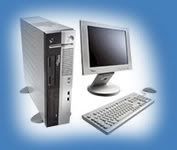Read more!
Sound recording and reproduction are two separate processes used to record, store play back sounds.
Sound recording uses microphones to pick up sound waves in the air. The pressure changes associated with the waves are converted into electrical signals, which can be coded and stored for future access.
Sound reproduction, or playback, uses additional devices to retrieve the stored information and convert it back into electrical signals. The signals are then sent to a loudspeaker, which convert them back into sound.
To record sound, a microphone changes the acoustic energy of sound waves in the air into electrical signals. Inside a microphone is a thin, flat, metallic surface, called a diaphragm, causing the diaphragm to move. This movement within a magnetic field creates an electrical signal. The signal is then transferred to a storage medium, such as a cassettes tape, a compact disk (CD), or a phonograph record.
To reproduce sound, a playing device – such as a CD player, cassette deck, or phonograph – accesses the stored data. The playing device reads the data and coverts the information back into electric energy. The electrical signal is sent to a loudspeaker, which has a diaphragm housed in a magnetic field in much the same way as a microphone’s diaphragm is housed. The electrical signal creates a disturbance in the magnetic field. These resultant variations in the magnetic field cause the diaphragm to move. As the diaphragm moves, it pushes out and pulls in, creating changes in air pressure to create the sound that was originally recorded.
Sound recording and reproduction from the foundation of many industries include entertainment, communication, and multimedia businesses. Recording and reproduction of sound allow people to play their favorite music, whether it was recorded yesterday or many years ago. Radio networks rely on sound recording and reproduction for storing news and other types of programming. Television and motion pictures combine images with music, speech and sound effects to provide the viewer with an enriched experience. Computer programs, multimedia, software, and video games also use sound to make programs more engaging.
 Soleh
Soleh













